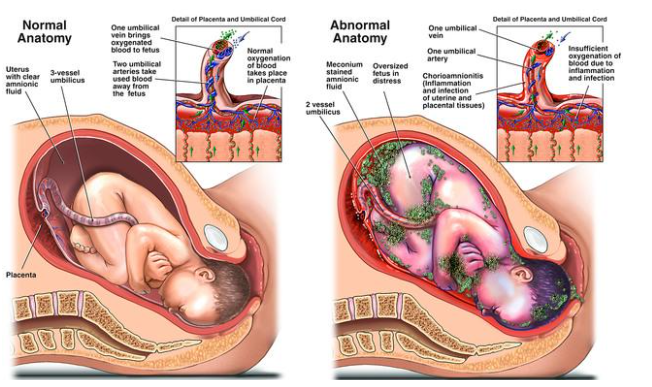The health care team member is providing preoperative education to a patient who is having a planned cesarean delivery.
The patient asks, “When will I be able to see my baby?” The health care team member is aware that promoting maternal bonding during the recovery period is especially important for postcesarean patients.
Why is this true?
Mothers have more problems with parenting skills.
Mothers may be at increased risk for poor bonding with the newborn.
Mothers cannot breastfeed right away.
Mothers may resent the health care team member for keeping the newborn in the nursery.
The Correct Answer is B
The correct answer is choice B. Mothers may be at increased risk for poor bonding with the newborn. This is because cesarean delivery can interfere with the natural hormonal and physiological processes that facilitate maternal-infant attachment, such as skin-to-skin contact, breastfeeding initiation, and oxytocin release. Cesarean delivery can also cause more pain, stress, and anxiety for the mother, which can affect her emotional availability and responsiveness to the newborn.
Choice A is wrong because mothers do not necessarily have more problems with parenting skills after cesarean delivery.
Parenting skills depend on many factors, such as education, support, personality, and motivation.
Cesarean delivery may pose some challenges for postpartum recovery and care, but it does not imply that mothers are less competent or capable of parenting.
Choice C is wrong because mothers can breastfeed right away after cesarean delivery, unless there are medical contraindications or complications.
Breastfeeding is beneficial for both the mother and the newborn, as it provides nutrition, immunity, comfort, and bonding. However, breastfeeding after cesarean delivery may require more assistance and support from health care providers and family members, as well as alternative positions and techniques to avoid pain and discomfort.
Choice D is wrong because mothers do not necessarily resent the health care team member for keeping the newborn in the nursery.
Mothers may appreciate the help and care that the health care team member provides for them and their newborns.
However, keeping the newborn in the nursery may delay or reduce the opportunities for maternal-infant interaction and bonding.
Therefore, it is recommended to promote early and frequent contact between the mother and the newborn after cesarean delivery, as long as it is safe
Nursing Test Bank
Naxlex Comprehensive Predictor Exams
Related Questions
Correct Answer is ["A","B"]
Explanation
The correct answer is choice A and B.A temperature of 38°C (100.4°F) or higher and foul-smelling lochia or increased lochia are signs of infection after a C-section.A C-section is a major surgery that involves making incisions in the abdomen and uterus, which can get infected by bacteria.An infection can also affect the lining of the uterus (endometritis) or the urinary tract.
Choice C is wrong because tenderness or hardness in the lower abdomen is normal after a C-section and does not indicate an infection.
Choice D is wrong because a decreased white blood cell count is not a sign of infection.In fact, an increased white blood cell count is more likely to occur with an infection.
Choice E is wrong because increased thirst or dry mouth is not a sign of infection.It could be due to dehydration, medication, or hormonal changes.
Correct Answer is A
Explanation
The correct answer is choice D. All of the above interventions should be implemented in the immediate postoperative period after a cesarean delivery.
Choice A is correct because assessing the client’s fundus for firmness and position is important to prevent postpartum hemorrhage and monitor uterine involution.The fundus should be firm and at the level of the umbilicus one hour after delivery and descend into the pelvis at a rate of approximately 1 cm per day.
Choice B is correct because encouraging early ambulation can prevent thromboembolism, which is a potential complication of cesarean delivery.Early mobilization can also reduce pain, ileus, and urinary retention.
Choice C is correct because monitoring the client’s intake and output can help detect fluid imbalance, dehydration, or urinary tract infection.
Fluid intake should be adequate to maintain hydration and support lactation.Urinary output should be at least 30 mL per hour.
Therefore, choice D is correct because all of the above interventions are appropriate for postoperative care after a cesarean delivery.

Whether you are a student looking to ace your exams or a practicing nurse seeking to enhance your expertise , our nursing education contents will empower you with the confidence and competence to make a difference in the lives of patients and become a respected leader in the healthcare field.
Visit Naxlex, invest in your future and unlock endless possibilities with our unparalleled nursing education contents today
Report Wrong Answer on the Current Question
Do you disagree with the answer? If yes, what is your expected answer? Explain.
Kindly be descriptive with the issue you are facing.
